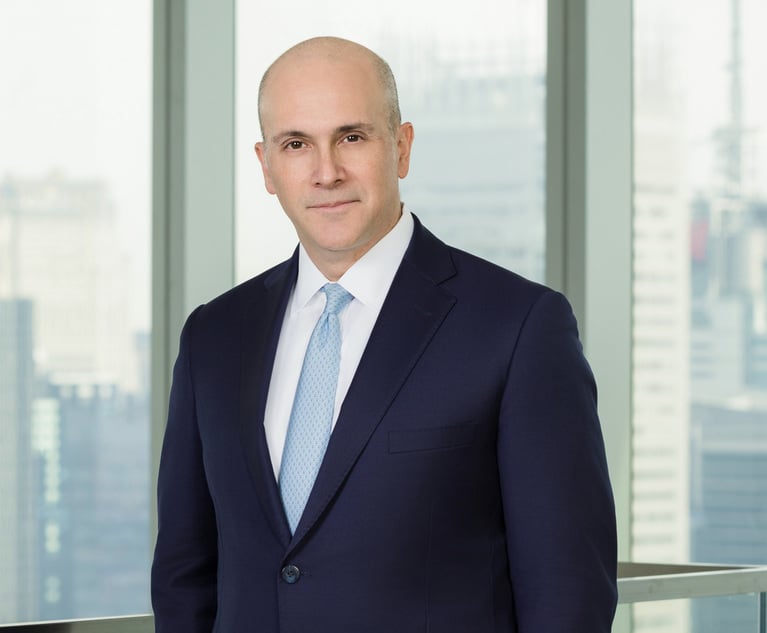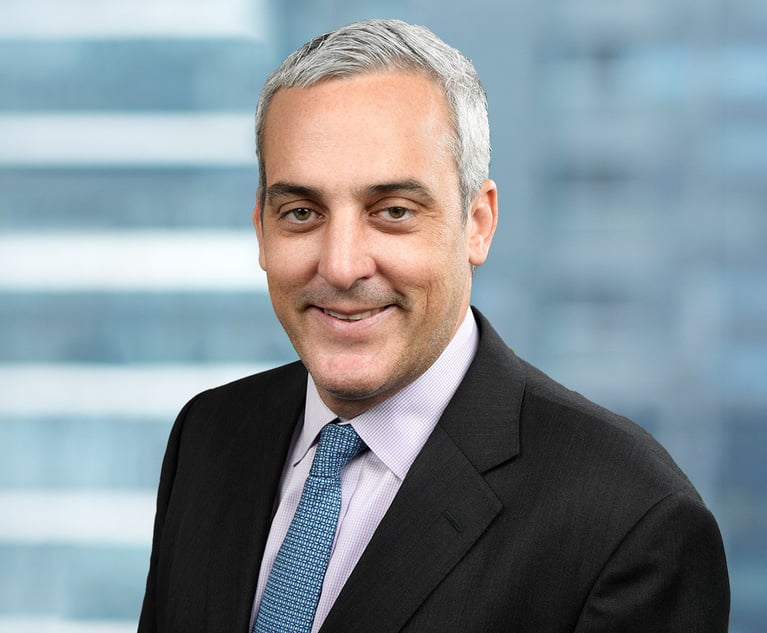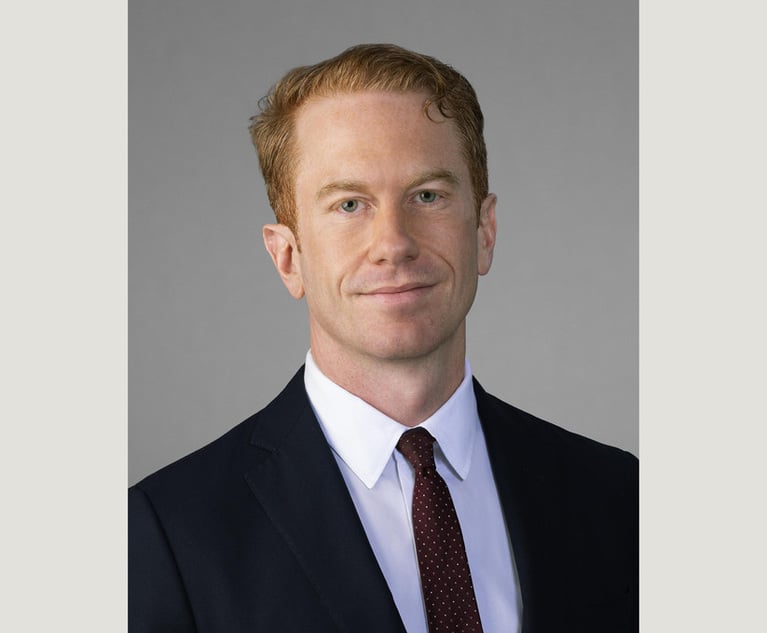With PPP Money Dwindling and Cases Rising, 'Substantial Uncertainty' Remains for Firms
Law firms received millions in the form of loans and grants as part of the Paycheck Protection Program. But as the money begins to run out, and COVID-19 cases continue to rise, law firms are not out of the woods yet.
July 09, 2020 at 03:29 PM
5 minute read
 Photo: fizkes/ Shutterstock
Photo: fizkes/ Shutterstock
Law firms have been relieved that the COVID-19 pandemic has not been as financially catastrophic for the industry as predicted in March, but the coming months will bring more uncertainty for firms and the broader economy as Paycheck Protection Program loans run out and coronavirus cases continue to rise in the United States.
The PPP, intended to cover salaries for up to two and a half months, disbursed most of its funding in April. More than 1,500 law firms across the United States received PPP loans, and at least 47 firms in the Am Law 200 received loans totaling between $218 million and $445 million, according to data released by the Small Business Administration, which administers the program.
Nearly two months after most loans were disbursed, though, firm leaders and legal observers now say firms aren't out of the woods yet.
"There's still substantial uncertainty around the 'second wave' and the long-term economic impact," said Sullivan & Worcester managing partner Joel Carpenter. "Supplemental unemployment is up at the end of the month. We're cautiously optimistic, but we still don't know where all this is going to take us."
The loan, Carpenter said, allowed his firm to weather the pandemic's initial impact without instituting broad layoffs. Instead, employees who made more than $66,000 per year saw a 5% reduction in salary, and partners also saw a double-digit reduction in their draws. The firm also furloughed fewer than 10 employees who were unable to do their jobs remotely.
While Sullivan & Worcester has brought back half of its furloughed staff, those jobs are tied to recent reopenings in New York. But some states, in response to the rising tide of coronavirus cases in June and July, have either paused or reversed their reopening plans.
On Wednesday, the Florida Department of Health announced 9,989 cases, bringing the state's total number of confirmed cases to 223,783. Florida's highest single-day total was recorded July 4, with 11,458 cases. Miami-Dade Mayor Carlos Giménez responded by reinstating bans on indoor dining and closing the beaches, among other steps.
Texas, Arizona, California and South Carolina are among other large states seeing upticks in cases, and U.S. industries continue to be hammered by the pandemic months after the virus first started appearing in the country: United Airlines announced Wednesday that it may furlough up to 40% of its staff, around 36,000 workers, Oct. 1, even after receiving much of the $25 billion in passenger airline stimulus funding allotted by Congress in March.
"The problem is that [PPP] is a short-term fix," said Paul Hastings partner Christopher Austin, who advises on PPP applications. "Anytime you can get funds in the door in a time of uncertainty, it gives the people more opportunities to get people employed. Whether or not that will last will depend on how people are doing now."
As with United Airlines, several firms that received PPP stimulus loans have announced pay cuts and furloughs. Hughes Hubbard & Reed laid off an undisclosed number of attorneys and staff Tuesday, despite receiving a loan between $5 million and $10 million.
In a statement to Law.com, the firm said Tuesday that while the PPP loan helped "to save jobs during the worst of the crisis," the "deep impact of court closures and a slowdown in deal activity" three months after the pandemic first began forced its hand.
A few firms that did not draw down PPP loans also announced austerity measures in June. New York's Fried, Frank, Harris, Shriver & Jacobson—which had a standout 2019—said it would offer voluntary buyouts to staff. Denver-based Holland & Hart announced broad pay cuts for both partners and staff.
And while layoffs and cuts are discouraged for those receiving PPP funds by being linked to loan forgiveness, there's nothing that would stop a firm from laying off employees after the money is spent and its loan forgiveness has been approved.
Gretta Rusanow, head of advisory services for the Citi Law Firm Group, said that among the 60 firms she collects data and projections from, roughly two-thirds are girding for projected median revenue declines of 5% in Q3. The firms, including almost half of the Am Law 100 and several firms in the Am Law 200, also projected a median 5% drop in demand and a median 5% lengthening of collections.
Rusanow added that firms have been initially pessimistic in their projections amid the pandemic: When asked to project demand for Q2 at the beginning of the quarter, a similar sample of law firms estimated a median demand drop of 15%. But by June, the firms moderated their projections to just 7%. Revenues among the group saw a median Q2 decline of 1%, although Rusanow notes that results varied greatly.
"What I've seen from this sample is that Q2 was better than expected, and firms went into the months very concerned," Rusanow said. "Going into Q3 there is an anticipated drop in revenue, but we may as well see a moderation as we go into the quarter."
Read More
Big Law Firms Got Millions of Dollars to Preserve Payroll. Some Made Cuts Anyway
Hughes Hubbard Lays Off Attorneys and Staff After Receiving PPP Loan
More Firms Seek Austerity Amid Lasting Concerns of Pandemic's Impact
This content has been archived. It is available through our partners, LexisNexis® and Bloomberg Law.
To view this content, please continue to their sites.
Not a Lexis Subscriber?
Subscribe Now
Not a Bloomberg Law Subscriber?
Subscribe Now
NOT FOR REPRINT
© 2025 ALM Global, LLC, All Rights Reserved. Request academic re-use from www.copyright.com. All other uses, submit a request to [email protected]. For more information visit Asset & Logo Licensing.
You Might Like
View All

What Happens When Lateral Partners’ Guaranteed Compensation Ends?

Latham Adds Former Treasury Department Lawyer for Cross-Border Deal Guidance
2 minute read
Wachtell Partner Leaves to Chair Latham's Liability Management Practice
2 minute readLaw Firms Mentioned
Trending Stories
- 1Big Law Firms Sheppard Mullin, Morgan Lewis and Baker Botts Add Partners in Houston
- 2Lack of Jurisdiction Dooms Child Sex Abuse Claim Against Archdiocese of Philadelphia, says NJ Supreme Court
- 3DC Lawsuits Seek to Prevent Mass Firings and Public Naming of FBI Agents
- 4Growth of California Firms Exceeded Expectations, Survey of Managing Partners Says
- 5Blank Rome Adds Life Sciences Trio From Reed Smith
Who Got The Work
J. Brugh Lower of Gibbons has entered an appearance for industrial equipment supplier Devco Corporation in a pending trademark infringement lawsuit. The suit, accusing the defendant of selling knock-off Graco products, was filed Dec. 18 in New Jersey District Court by Rivkin Radler on behalf of Graco Inc. and Graco Minnesota. The case, assigned to U.S. District Judge Zahid N. Quraishi, is 3:24-cv-11294, Graco Inc. et al v. Devco Corporation.
Who Got The Work
Rebecca Maller-Stein and Kent A. Yalowitz of Arnold & Porter Kaye Scholer have entered their appearances for Hanaco Venture Capital and its executives, Lior Prosor and David Frankel, in a pending securities lawsuit. The action, filed on Dec. 24 in New York Southern District Court by Zell, Aron & Co. on behalf of Goldeneye Advisors, accuses the defendants of negligently and fraudulently managing the plaintiff's $1 million investment. The case, assigned to U.S. District Judge Vernon S. Broderick, is 1:24-cv-09918, Goldeneye Advisors, LLC v. Hanaco Venture Capital, Ltd. et al.
Who Got The Work
Attorneys from A&O Shearman has stepped in as defense counsel for Toronto-Dominion Bank and other defendants in a pending securities class action. The suit, filed Dec. 11 in New York Southern District Court by Bleichmar Fonti & Auld, accuses the defendants of concealing the bank's 'pervasive' deficiencies in regards to its compliance with the Bank Secrecy Act and the quality of its anti-money laundering controls. The case, assigned to U.S. District Judge Arun Subramanian, is 1:24-cv-09445, Gonzalez v. The Toronto-Dominion Bank et al.
Who Got The Work
Crown Castle International, a Pennsylvania company providing shared communications infrastructure, has turned to Luke D. Wolf of Gordon Rees Scully Mansukhani to fend off a pending breach-of-contract lawsuit. The court action, filed Nov. 25 in Michigan Eastern District Court by Hooper Hathaway PC on behalf of The Town Residences LLC, accuses Crown Castle of failing to transfer approximately $30,000 in utility payments from T-Mobile in breach of a roof-top lease and assignment agreement. The case, assigned to U.S. District Judge Susan K. Declercq, is 2:24-cv-13131, The Town Residences LLC v. T-Mobile US, Inc. et al.
Who Got The Work
Wilfred P. Coronato and Daniel M. Schwartz of McCarter & English have stepped in as defense counsel to Electrolux Home Products Inc. in a pending product liability lawsuit. The court action, filed Nov. 26 in New York Eastern District Court by Poulos Lopiccolo PC and Nagel Rice LLP on behalf of David Stern, alleges that the defendant's refrigerators’ drawers and shelving repeatedly break and fall apart within months after purchase. The case, assigned to U.S. District Judge Joan M. Azrack, is 2:24-cv-08204, Stern v. Electrolux Home Products, Inc.
Featured Firms
Law Offices of Gary Martin Hays & Associates, P.C.
(470) 294-1674
Law Offices of Mark E. Salomone
(857) 444-6468
Smith & Hassler
(713) 739-1250










